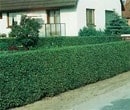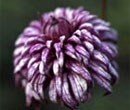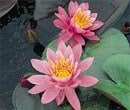How to plant successfully
Container-grown plants can be planted at any time of the year, but they establish most quickly if planted in autumn or spring. In my garden, I try to complete all the major replanting in October and November, to reduce the workload in spring when there's so many other jobs to do. Autumn is the ideal time, in any case, because the soil is moist but not so wet that it sticks to your tools and boots, and is still warm enough to encourage new root growth which helps the plants establish quickly. The exception to this rule are evergreens (including conifers) which should be planted in April.
Planting is a shocking business if you're a plant and some of the more delicate types have a tendency to sulk or even give up altogether if they are not treated with respect. This means making sure that the plant is suitable for the soil you have in your garden as well as the conditions offered by the particular position you have in mind. For example, in my garden the soil is alkaline thanks to a chalky subsoil, so I can't grow acid-loving plants, such as rhododendrons and azaleas, which would deteriorate rapidly. Similarly, many plants are sun lovers and don't perform well if left sitting in shade for much of the day. Check the information given on the plant cards before you buy or, if in doubt, e-mail the Crocus Plant Doctors on ineedhelp@crocus.co.uk to get more information. You also need to handle the plants carefully and plant them well. Although planting techniques vary according to the type of plant you're putting into your garden, they all require good soil preparation beforehand to ensure success.
Give them the perfect start
The last thing a new plant needs is to have to compete for moisture, nutrients and growing space with surround plants and weeds. So I make sure it gets sufficient room and I remove all the weeds before planting. The best way to do this is to dig over the planting site and tease out the weeds and any other debris. Take particular care to remove the roots of tenacious perennial weeds which will re-sprout and become a long-term headache if left in the soil. In my garden, ground elder is a real pain, but regular hoeing and forking mean that I've just about got on top of it. Digging the planting site also gives you the opportunity to improve the soil by incorporating lashings of organic matter such as manure or garden compost. I would apply around a bucketful per square metre on ordinary soils and about five times this much on poor soil. When planting a hedge, prepare a strip at least 1m (3ft) wide the length of the hedge.











